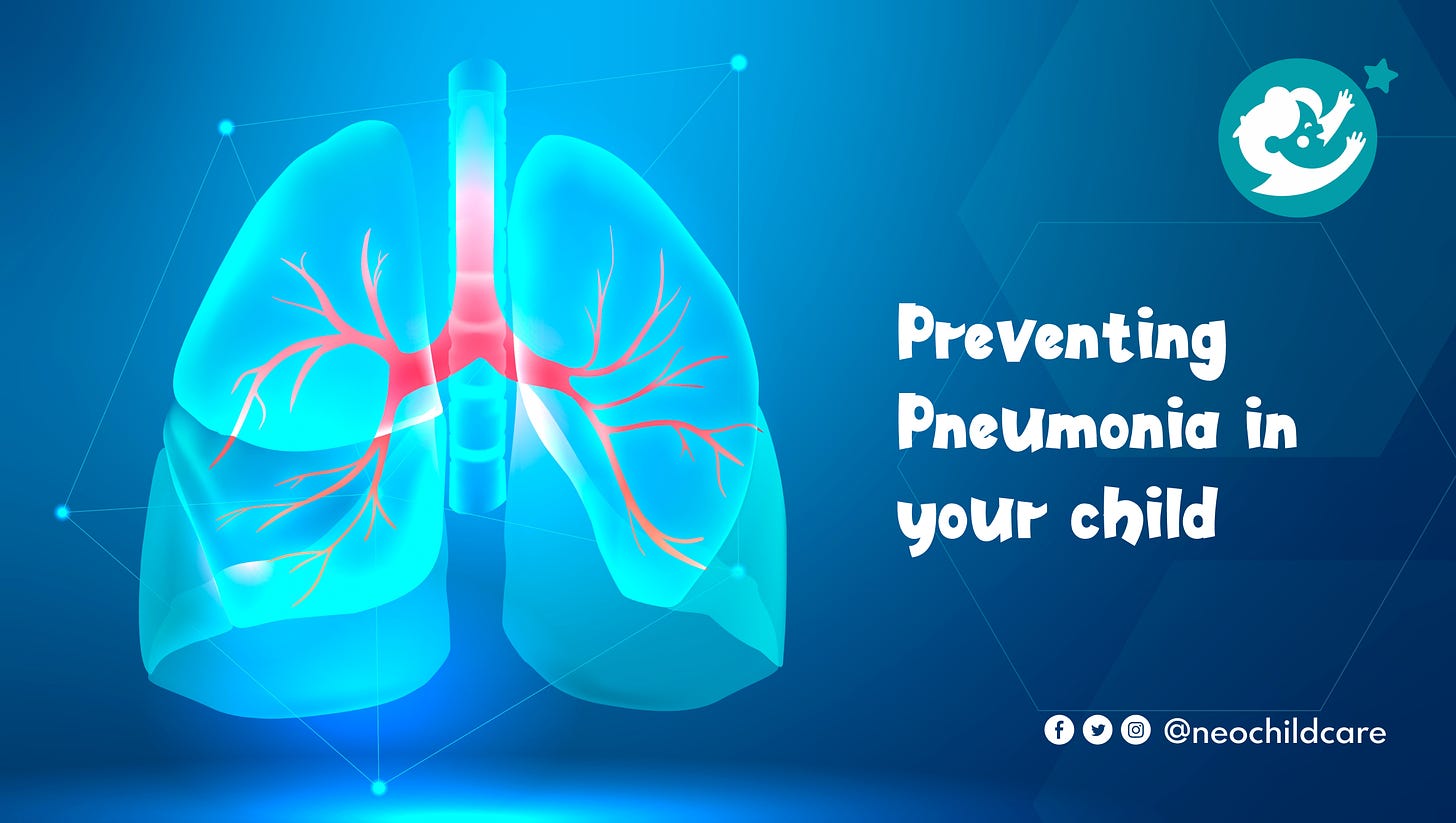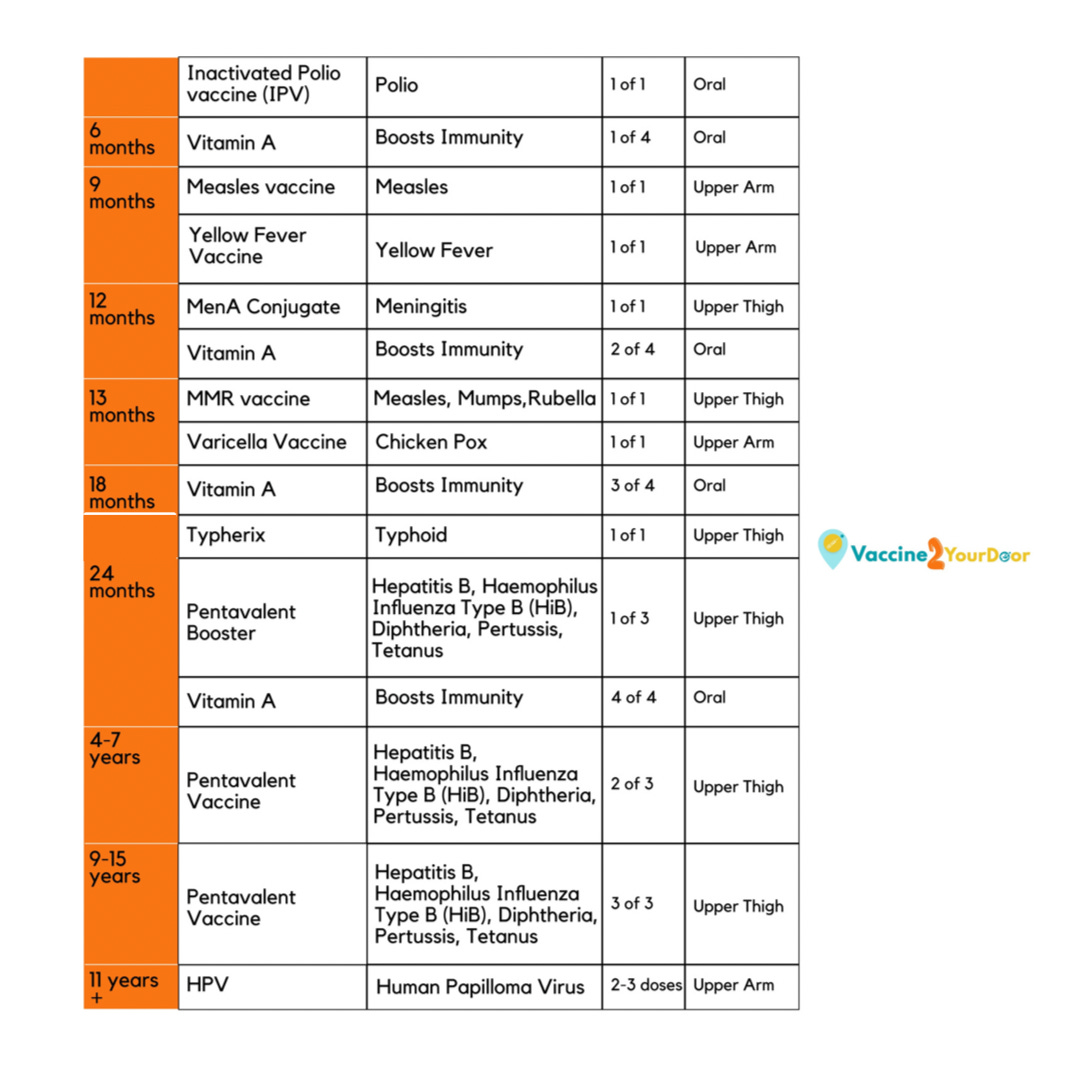Hey momma,
Did you know that Pneumonia is the single largest infectious cause of death among children worldwide? You didn’t? Well, now you do. This is why you need to read this carefully so as to take adequate precautions.
Pneumonia is a form of respiratory infection that affects the lungs. The lungs are made up of small airway sacs called alveoli which fill up with air when a healthy individual breathes. If your child has pneumonia, these small sacs become swollen and produce more mucus (which would be thicker than normal due to the infection). This in turn makes breathing painful, blocks the airway and reduces the amount of oxygen that gets into the body.
Pneumonia is spread by infected people who carry the germs in fluid drops in their throats, noses or mouths. The infected person coughs these germs into the air and your child breathes in the germs or comes in direct contact with the infected person’s saliva or mucus by touching something. Know that it is possible to catch pneumonia from someone who doesn't even know they are sick.
Pneumonia can be caused by either a virus or bacteria; the latter being more severe. Pneumonia caused by a virus often starts out like the flu and slowly gets worse over a few days while that caused by bacteria can come on suddenly with a high fever, fast breathing and coughing.
There are a few things you can do to try to prevent your child from getting pneumonia;
Ensure your child’s vaccinations are up to date. Vaccines lower the risk of your child getting an infection tremendously and this is your best bet at preventing pneumonia.
Below is a schedule of vaccines recommended by WHO to help ensure that you’re on track.
If your child is 6 months or younger, it is important for them to get a flu vaccine every year. The shot offers protection against the flu for about 6 months and is best taken around October as this is when there is typically increased activity of the flu.
Teach your child the proper way to cough and sneeze. They should ensure they do these into a tissue or the sleeve of their shirt at the crook of their elbow. Proper disposal of the tissue is also very important as well as washing their hands afterwards.
Teach and practise good hand washing. Children use their hands a lot and touch a lot of unclean and sometimes infected surfaces. Teaching them how to properly wash their hands and making it compulsory for them to do it regularly throughout the day goes a long way in preventing the infection.
Wash surfaces that your child frequently touches with soap and water or wipe down with disinfectant. Seeing as pneumonia can be transmitted through infected surfaces, this is important to prevent it.
Keep your home smoke free as much as possible. Inhaled smoke can also increase the production of mucus in the lungs because this is a mechanism the body typically adopts to prevent unclean or infected substances from being inhaled deep into the lungs.
Things to look out for:
Your child having trouble breathing or breathing faster than usual.
A bluish or grey colour to the fingernails or lips.
A fever of 38.9°C if your child is older than 6 months.
A fever of 38°C if your child is younger than 6 months.
If your child has a fever for more than a few days after taking antibiotics.
If you notice any of the above in your child, we can set up a virtual consultation with expert health care professionals for you. Remember that pneumonia isn’t a death sentence for your child and it can be treated. It might sometimes be difficult to see your child in such distress but it too shall pass.
You’ve got this momma, we’re rooting for you always!






